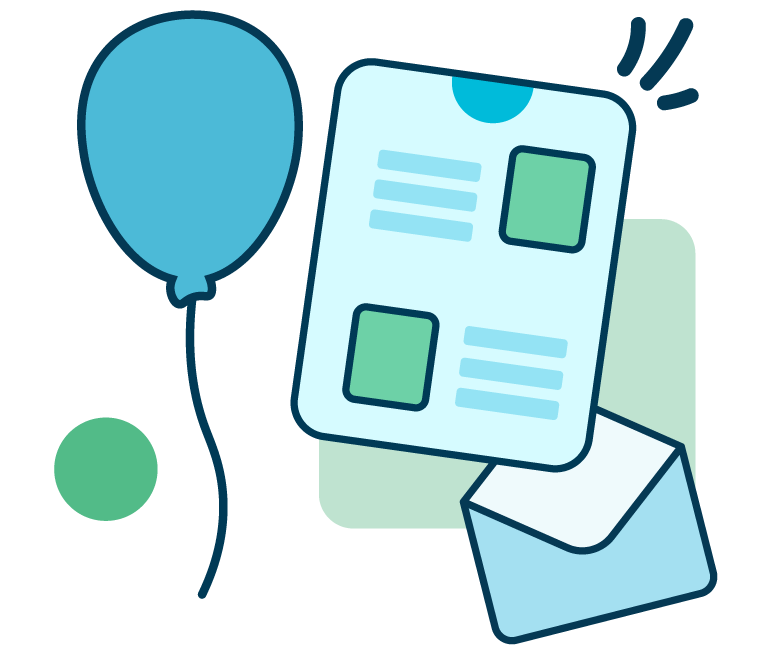5 ways to integrate the SMS channel and email

Of the 7.7 billion people on the planet, an estimated 3.5 billion have internet access and over half of them use email. However, did you know that around 5 billion can send and receive SMS?
Inaddition, according to TechJury, 75% of consumers do not object to receiving SMS from brands(subject to prior consent, of course). Furthermore, people redeem the coupons received via SMS 10 times more than coupons sentthrough other channels. If we add to this that SMS have an average opening rate of 98%, then weunderstand how great the potential of this channel is.
The point is that SMS best expresses its marketing potential when it’s integrated with other channels. As many know, email is its perfect partner. Therefore, let’s see 5 ways to integrate SMS Marketing and Email Marketing to give your strategy a cross-channel approach.

From developing integrations to strategic support, from creating creative concepts to optimizing results.
1. Cultivating contacts
Premise:for a strategy to be truly effective, it can’t ignore the automation functions. This isespecially true during the early stages of the relationship with the lead.Here’s just one example: a study conducted by James Oldroyd of MIT foundthat real estate agentswho contact leads within five minutes of signing up, rather than within 30minutes, are likely to receive 100 more responses.
The key word then is workflow, which involves an automatic sequence of emails and SMS messages. The drag & drop interface of the MailUp automation section can build the flow in a few steps, determining the wait time between messages and the criterion for calculating it (x days/hours from sending/opening/clicking/not opening, etc. of the message).
Another key function for cross-channel lead nurturing is click automation. This is best illustrated through an example. Let’s look at this Airbnb email:

Each content is linked to a differenttravel proposal. Automation on click allows for designing a strategy that triggers an oriented workflow based on the content clicked by the recipient.
The example comes from tourism, but the same operation can match any kind of commercial sector (e-commerce, retail, real estate, banking, etc.). We can thus create two different workflows after sending the first email. The goal is to lead the recipient to the purchase according to the interest shown by his/her click. Here are two flows that we could create, one email and the other SMS:
1. Email
When: 7 days after delivering the newsletter
Trigger: Clicking the link embedded in the Lake Michigan trip form
Workflow type: Goal activity
Goal: Offering the Lake Michigan trip again
2. SMS
When: 7 days after launching the goal activity email
Trigger: Failing to click on the goal activity campaign
Workflow type: Cross-selling
Goal: Proposing an alternative to the Lake Michigan trip—a trip to Rio de Janeiro
2. Building customer loyalty
Apractical example can also help in this case. Let’s analyze a real strategy by Loytrend. This entity develops customerloyalty strategies for allowing shops, franchises, and large companies toincrease revenues and improve their brand identity.
Loytrendneeded to:
- Collect new email and telephone contacts for addressing its loyalty campaigns
- Retain customers through targeted and profiled campaigns
- Create and launch omnichannel communications (both offline and online)
- Take advantage of SMS messages, which are even more incisive and immediate than emails for recovering inactive customers.
Forits client, CVG Moda Loytrendcreated the “Dine with Valentina” initiative. This included the giftof one of the six porcelain plates from Crepax’s “Valentina”collection to all CVG-card customers who purchased at least 50 euros in a givenperiod.
Thestrategy involved the following channels:
- Points of sale
- Social media
- SMS.
Theanalysis of the sending reports and the ROI showed how the SMS were key toreactivate the inactive clients and, at the same time, retain them. As manyas 5,500 contacts went to thecloser store and purchased again in response to the the 20,000 SMS messages sent.
Theresult was a 5% increase in the average receipt, +10% reactivated customers, and a +30% turnover leap compared toJanuary of the previous year. More specifically, within this +30% ofrevenues, 1/3 of the increase wasgenerated by SMS.
3. Encouraging the subscription of a service or program
As said, the SMS has the merit of succeeding where emails can’t. Its 98% on-average opening rates guarantee companies that the recipients actually open the message and view its content. Then, making the message effective and persuasive within the 160 available characters it is up to the brand’s talent.
Therefore, SMS are even more effective than email campaigns in certain contexts. Benefitting from the inbound functions, many brands create cross-channel strategies that start with an SMS (to breach recipients) and continue with emails.
SMS task is to collect memberships, i.e. subscriptions. The emails are meant for follow-up activities, communicating rewards, benefits, and useful information
4. Promoting the latest and products at certain times of the year
What are these “certain times of the year”? One example is the summer period, when distance from work and urban routine causes a sharp performance drop and the email shows its natural limits.
TheSMS allows for getting around this problem. SMS messages don’t depend on acomputer screen. They can reachrecipients everywhere, even on the beach, on a trip, or by the pool. Thisis why it’s worth making use of them to conquer potential purchases andcustomers, even during summer.
One idea could be to create the following workflow. First, an email announces seasonal sales and promotions. Then, an SMS with the same purpose addresses only those contacts who didn’t open the email.
5. Strengthen transactional communication
The same goes for transactional communication. For example, you can automatically send an order shipping notification simultaneously via email and SMS, or send an SMS a few hours later if the email hasn’t been opened.
How to integrate the data to synchronize them between email channel, SMS, and any further system (CRM, CMS, ERP, e-commerce, etc.)?
This is no trouble. Technology, in particular API (SOAP and REST), web service, and FTP batch are here for that. In this way your customers’ data, as well as their purchases and preferences, can circulate in sync between all the different systems.
In summary
We aimed to convey the marketing objectives that you can achieve by integrating text messages into the email channel. As you’ve learned, this doesn’t take more than relying on an integrated platform that provides you with all the functions of integration, creation, sending, and tracking.
Here’s the last tip: get your cross-channel strategies right away. For this, request a free MailUp trial. You’ll have a month to familiarize yourself with its Email & SMS Marketing functions.